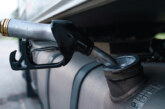
Nick Austin, Maha’s UK Sales Manager, explains the importance of DVSA and GEA approval, and why its MBT 7250 Eurosystem is so much more than a brake tester.
The MBT 7250 Eurosystem is used extensively in DVSA and ATF stations to quickly and accurately measure brake system performance. Its large roller sensor, with a diameter of 100mm and axle load of 18 tonnes, guarantees excellent coverage across every tyre’s dimensions.
It is possible to connect additional floor units, so the brake tester can also be used as a base module for installing test lanes. Its electronic, temperature-compensated strain gauge system produces precise measurements results, irrespective of the conditions, thanks to its robust and long-lasting design.
With more than 80,000 MBT 7250s installed globally, including 1,000 in the UK, it is a proven and trusted product. A crucial benefit of using a MBT 7250 is that it is fitted with a dual speed motor. In the UK, opposed to other parts of the world, users will conduct an applied park brake test.
They will put the park brake on, with the objective of turning the rollers with the brakes in position, so they could simulate a real-life scenario where brakes could fail while on a hill, for example.
Instead of one consistent speed, where extreme torque could stress and damage components if the applied brake test is conducted too aggressively, users can operate the MBT 7250 at a slower speed to start with; consequently, this gives a longer lifespan of the motor gearbox assembly. Some MBT 7250s are still fitted with the original motor gearbox assembly that was fixed 20 years ago.
Importance of DVSA and GEA approval
The MBT 7250 was originally built to DVSA specification, and as the GEA has become increasingly influential in the approval process by working in unison with the DVSA, the criteria for meeting the requirements are more stringent than ever.
The GEA upholds industry standards and handles the approval process on behalf of DVSA. If a company wants its product to penetrate the ATF market, it will require a certificate of acceptance, with checks on technical requirements, calibration, level of instruction manual and identification.
There is a list of approved DVSA roller brake testers for all vehicles, including heavy goods and public service vehicles, on the GEA website – of which Maha is included on. If equipment listed in the section is labelled as ‘restricted’, that machine may no longer meet DVSA specification; however, as long as the equipment is in good working order, calibrated, and meets the latest software requirements, it can continue to be used in existing MOT stations – but not fitted in new sites or replace existing equipment.
Adaptability of the product
Eurosystem is not simply designed to control the brake tester itself; users can add modules and watch the MBT 7250 evolve into an allencompassing workshop platform.
Technicians can add a tachograph, for example, so the workshop could become a tachograph calibration specialist. Maha can fit automatic number plate recognition, so users can photograph a vehicle while it’s being tested and prove the vehicle was there.
In addition, Maha’s MLT 3000 headlamp tester can be mounted, communicated via the brake tester, and send a headlight test report. A sideslip mat – a chassis that can be fitted to the floor in front of the tester – can measure how many metres a vehicle deviates per kilometre. If it’s more than nine, that vehicle will require tracking.
Those are just a few examples of how Maha has enhanced its MBT 7250 from a comprehensive braking and diagnostics tool to a futureproof workshop platform.








